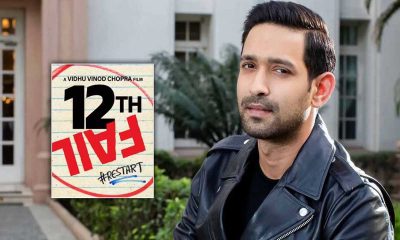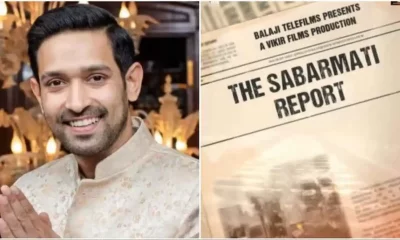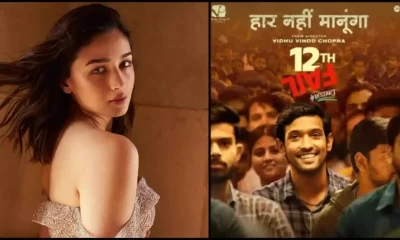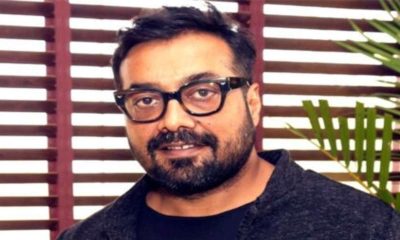Latest Art & Culture
With a weak storyline, A Death fails to impress

[vc_row][vc_column][vc_column_text]Konkona Sensharma’s mediocre debut relies too much on cast; acting and music are its sole forte
By Sucheta Dasgupta
In the 19th century, ‘paschim’ (meaning west, but referring to northern and central Indian locations, and not to be confused with ‘paaschaatya’, meaning The Occident) was a common destination for the travelling Bengali. The well-heeled among community members would travel to Deoghar, Jasidih and Ghatshila (all in Jharkhand) for the curative ‘change of air’ (hawabadal) recommended by the family doctor, Varanasi and Allahabad (Uttar Pradesh) for study and pilgrimage, and Raipur (Chhattisgarh), Bhopal and Jabalpur (Madhya Pradesh) to work for the British government. This was even as their less enlightened brethren in the heartlands continued to live by beliefs such as the one that dictated anyone walking nine kos (one kos is a little over three kilometres) away from his village should lose his caste. But the Renaissance had arrived and its message was spreading fast.
In 1933, Irishman Ernest Timothy McCluskie set up McCluskieganj near Ranchi, in the scenic backdrop of the Lohardaga Ghat hills and the Dugadugi river, as a mooluk (homeland) for Anglo-Indians. Just under 475 km from Kolkata, the town soon became a favourite getaway for Bengali holidaymakers who, along with Gujaratis, have traditionally been the most active in the domestic tourism scene. Set in the pre-liberalisation 1970s and depicting the lives of the Bengali jeunesse dorée, A Death in the Gunj is actor Konkona Sensharma’s first directorial venture and is based on a slice-of-life penned by her father, the writer Mukul Sharma. And from context to content, in so many ways, it is a Bengali film in English just as Shoojit Sircar’s Piku is a Bengali film in Hindi.
The film opens with a panoramic shot of the misty jungles of McCluskieganj with hill ranges on the horizon. The camera cuts to two men standing in front of the open boot of a car, discussing how best to fit “a body” inside it. Who died? What led to their demise? The entire story is told in retrospect.
It is about a family from Calcutta (as the West Bengal capital was then known) spending its winter holidays in the Gunj. The patriarch-in-making Nandu (Gulshan Devaiah) and sensitive Shutu, or Shyamal, played memorably by Vikrant Massey, are brothers travelling with Nandu’s controlling wife, Bonnie (Tilottama Shome), their whiny eight-year-old, Tani (Arya Sharma), and Bonnie’s sexy-minx Franco-Bengali friend, Mitali aka Mimi, also played masterfully by the talented Kalki Koechlin. The group arrives at the bungalow of Bonnie’s parents, the drinks-loving ex-serviceman OP Bakshi (Om Puri) and kind and down-to-earth Anupama (Tanuja). They are joined there by more friends—Australia-bound Brian (Jim Sarbh) and fun-loving and macho, if rakish, Vikram, who is of nawabi ancestry and is portrayed in a powerful performance by Ranvir Shorey.
 Shutu, the pivot of the story, is a student with a secret. He is the quintessential ‘weakling’, emotional, intellectually gifted and an introvert who ends up becoming a pushover. His crisis is not an uncommon one among Bengali youth. He is struggling to cope with his father’s death and, predictably, studying science when he clearly enjoys languages more. In no few instances, he reminds the viewer of Michael Burke’s 2003 drama film, The Mudge Boy, wherein the titular character is played by a young Emile Hirsche. However, unlike him, Shutu is denied his moment of redemption, which arrives in a kabaddi game but is taken away from him in true-blue Bengali fashion by an overprotective mother figure. One can say his character study is at the heart of the film.
Shutu, the pivot of the story, is a student with a secret. He is the quintessential ‘weakling’, emotional, intellectually gifted and an introvert who ends up becoming a pushover. His crisis is not an uncommon one among Bengali youth. He is struggling to cope with his father’s death and, predictably, studying science when he clearly enjoys languages more. In no few instances, he reminds the viewer of Michael Burke’s 2003 drama film, The Mudge Boy, wherein the titular character is played by a young Emile Hirsche. However, unlike him, Shutu is denied his moment of redemption, which arrives in a kabaddi game but is taken away from him in true-blue Bengali fashion by an overprotective mother figure. One can say his character study is at the heart of the film.
The other subject the film deals in is showing the audience how the Bengali other half lives. To that extent, it is also a mildly ironic look at their often-superficial, self-centred lives, where they are shown maniacally singing, dancing and playing games while the feeding and care of their pets are left to the household help. Mimi’s hedonism and bohemian ways form part of a familiar stereotype. It is perhaps the first time Koechlin plays a femme fatale with a decadent side to her; as usual, she is a treat for sore eyes.
There are many nostalgic period props—the blue Ambassador, the bellbottoms, the trunk call and rotary dial phones and the currency (the Anglo-Indian patisserie lady says, that will be nine rupees and four annas, please). There is humour—when Tani goes missing and her mother is worried for her safety, her tipsy and forgetful grandfather says, why are you people working yourselves up over nothing? Haridas is not to return; the tribals have found him and eaten him up by this time. Haridas, the tortoise, was a family pet who was forgotten on a trip and never returned home.
There are cultural references—the mutton, for instance, is cooked with potato, and Mimi cuts them too finely, not knowing it would make them melt into the gravy. The mahua and the madol of the Santhals may be familiar to many a Bengali, but will capture the imagination of north and south Indians. As will Sagar Desai’s eclectic choice of music—especially the traditional Santhali folk song—Toot gachhe bhoot nache. Otherwise, the film is held together by the superb acting of its strong cast—the veterans deliver what is promised and the younger lot does not disappoint. Sirsha Ray’s camerawork is moody and melancholic.
Nevertheless, the linear narrative of the film drags quite a bit in both the first and second halves. The ending is an anti-climax. The screenplay is superficial and the treatment sketchy and somewhat self-indulgent, with too many plot holes. It shies away from confronting the parenting, family and mental health issues it sets out to address.
The movie is marketed misleadingly as a mystery and a thriller; it is not speculative fiction either, as one newspaper has tried to claim. Because speculative fiction means the writer must create an entire parallel universe and a (fake) séance (“planchette?”), a song and the cinematic suggestion of someone having given up his ghost, literally, does not even an old-fashioned ghost story make.
Sensharma’s directorial venture is competently produced but lacks courage—and a well-told story. It ends up leaving the viewer a trifle underwhelmed.
At one point in the film, Koechlin’s Mimi wonders, what if Shutu had been a girl? What if Shutu had been a girl? Would the added pressure of misogyny have led her to ‘man up’, break free of her dilemmas and face up to her issues? Just to see for herself if she could stand up to society and follow through on her own psychological quest? Possibly satisfy it? It’s a moot point.[/vc_column_text][/vc_column][/vc_row]
Entertainment
Yashraj Mukhate collaborates with Amit Trivedi for Mann Dhaaga song
In a post circulating on Instagram Yashraj Mukhate talks about his experience of listening to Amit Trivedi’s music and recalls how he had always dreamt of collaborating with Amit Trivedi. He said his dream came true 2 years later in 2024 where he collaborated with Trivedi on the song Mann Dhaaga.
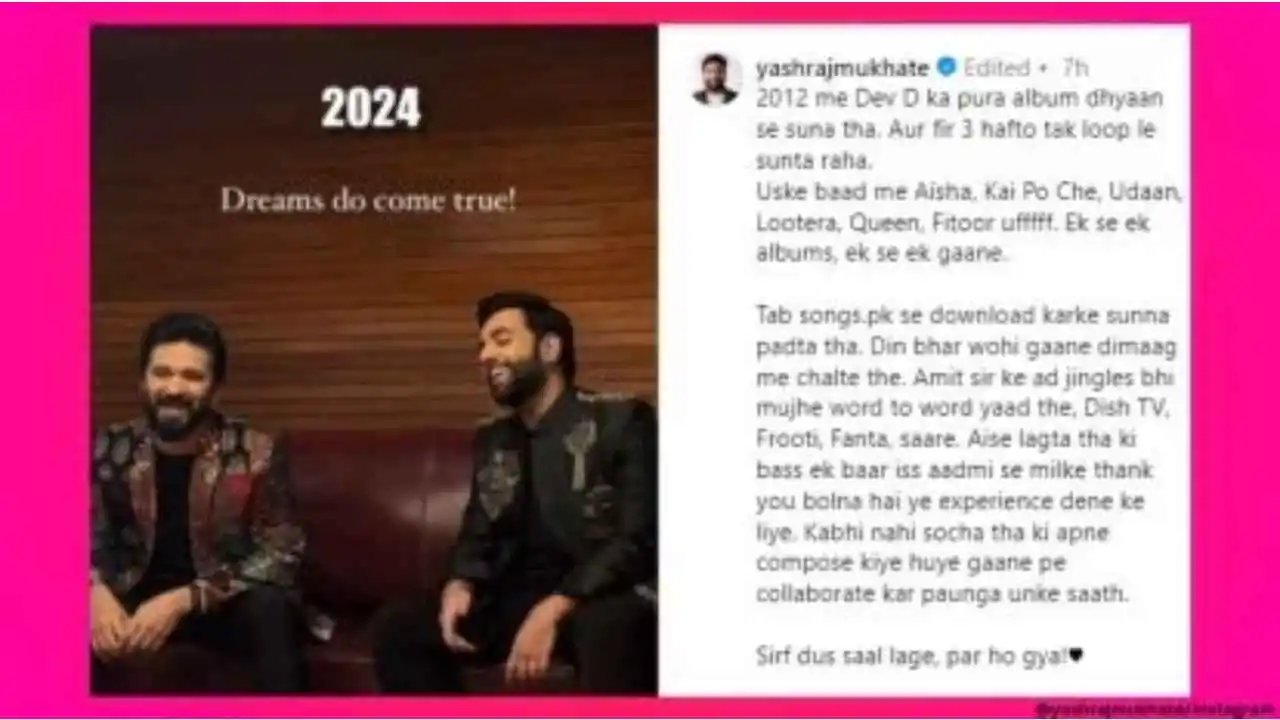
Amit Trivedi is known for his soulful compositions which weave profound lyrics, captivating music lovers. His songs spark a deep desire in aspiring artists to collaborate with him. Music producer and You Tuber Yashraj Mukhate had immense admiration for Trivedi’s artistry. In a post circulating on Instagram Yashraj Mukhate talks about his experience of listening to Amit Trivedi’s music and recalls how he had always dreamt of collaborating with Amit Trivedi.
He said his dream came true 2 years later in 2024 where he collaborated with Trivedi on the song Mann Dhaaga. He wrote that he had been listening to the entire Dev D Album carefully in 2012. And he kept listening to it on loop for 3 weeks. He continued to listen to Amit Trivedi compositions in Aisha, Kai Po Che, Udaan, Lootera, Queen, Fitoor continuously. He said he could not stop himself and became a big fan of the music director. He said he started dreaming of meeting his idol one day and collaborating with him.
He recalled that he had to download songs from songs.pk and listen to them. He said the songs kept running inside his mind all through the day. He added that he even remembered Amit Trivedi’s ad jingles word for Fanta, Frooti, Dish TV and all of them.
Mukhate said he always dreamed of meeting Amit Trivedi and wanted to thank him for giving this experience. The post has gone viral on social media with 96,445 likes till now. Large number of social media user commented on the social media post where one user Parth said the Yashraj Mukhate was truly an inspiration. One user said his dedication had brought him to level. One user said a man should make all his dreams come true by going through one hustle at a time.
Book reviews
The Sattvik Kitchen review: Relook at ancient food practices in modern times
If you are the one looking to embrace healthy food habits without compromising on modern delicacies, then this book is a must read!
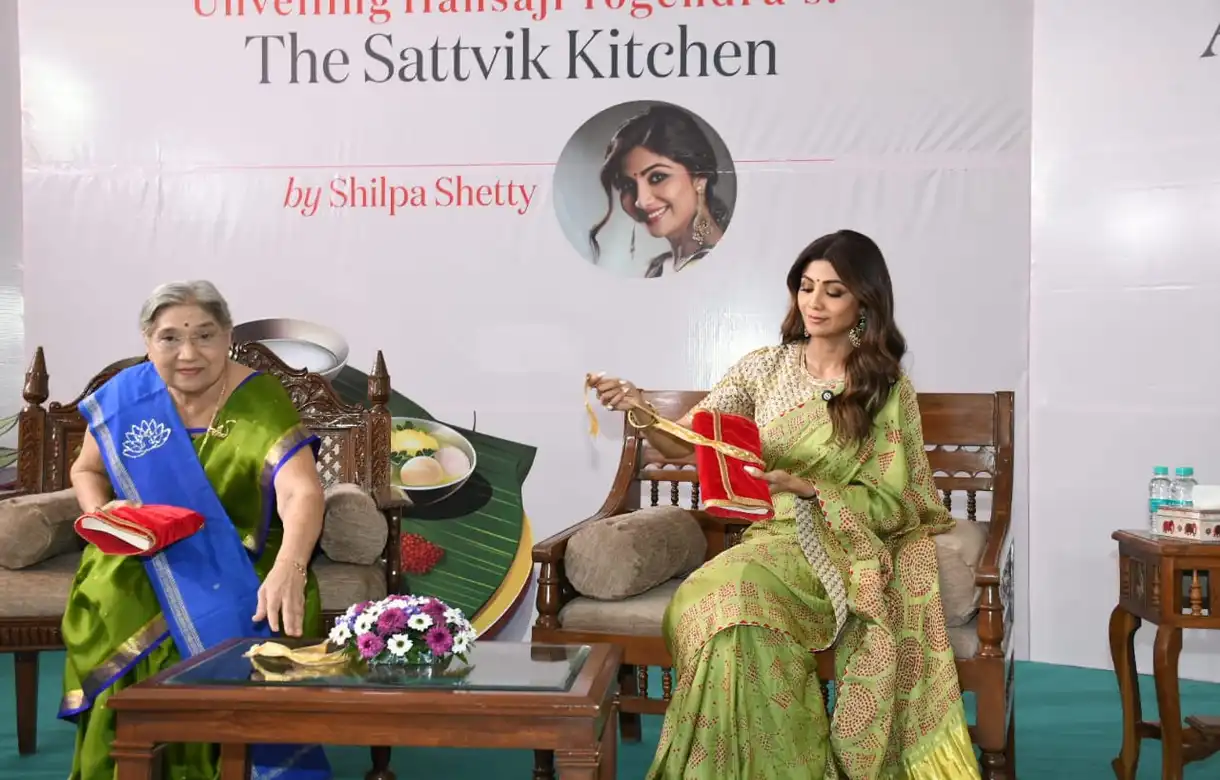
The cacophony of bizarre food combinations across the streets of India has almost taken over the concept of healthy food practices. Amid this, yoga guru Dr Hansaji Yogendra’s The Sattvik Kitchen, published by Rupa, is a forthright work that takes you back to ancient food practices and Ayurveda.
As the subtitle reads, The Art and Science of Healthy Living, the book endows a holistic approach to ayurvedic diet along with modern evidence based nutrition. From Basil-Broccoli Soup to Sprouted Green Gram Salad and Strawberry Oats Smoothie to Mixed Dal Parathas, the book not only provides you with the recipes but also stresses on healthy cooking tips together with nutritional benefits.
Besides, Dr Hansaji Yogendra’s book emphasizes on the traditional methods of food preparation and the advantages of using traditional cookwares like iron and copper vessels. The narrative portrays a balanced approach, knitting traditional wisdom with contemporary scientific understanding.
The author, through her book, sheds light on the principles of Ayurveda and highlights the metamorphic potential of adopting ancient food practices. She explains how our body reacts to food in terms of timing, quantity, manner of consumption and seasonal considerations. The book adeptly reintroduces ancient home remedies tailored to address various contemporary health issues.
Dr Yogendra, in her book, decodes the importance of nutritional knowledge to optimize both immediate and long-term health outcomes. It provides deep insights to understanding the intricate relationship between food choices and overall well-being, weaving Ayurveda with practical perception.
The book not only celebrates food philosophy but also offers a practical view into weight loss, well-being, and the profound impact of dietary choices on both physical and emotional aspects of our lives.
If you are the one looking to embrace healthy food habits without compromising on modern delicacies, then this book is a must read! The book is a roadmap to navigate the challenges of the modern day kitchens.
Book reviews
The Deccan Powerplay review: Bashing Chandrababu Naidu and his legacy
Amar Devulapalli’s book The Deccan Powerplay cornersthe TDP strongman with every petty incident exaggerated a la Baahubali

Mike Marqusee’s War Minus The Shooting is a seminal book on cricket and its influence on culture and politics in the Indian sub-continent during the 1996 Cricket World Cup. Amar Devulapalli’s book The Deccan Powerplay, published by Rupa, sounds like a similar exercise with its clear subtitle, “Reddy, Naidu and the Realpolitik of Andhra Pradesh“. The ambitious sounding subtitle crumbles under the weight of belied expectations of a scholarly treatise on the political interplay between the Reddys, the Kammas and the erstwhile united Andhra Pradesh. One can blame it on one’s own hopes and excuse the author of the lapse since the book has just three people to discuss: YS Rajsekhara Reddy, N. Chandrababu Naidu and Y.S. Jagan Mohan Reddy.
The chief protagonists here are YSR and his son, the incumbent Chief Minister of bifurcated Andhra Pradesh, Jagan Mohan Reddy. The lone villain, and one crafty as a fox if ever there was one, is Chandrababu Naidu. The book devotes a chapter to the corruption cases against Naidu, for which he was arrested in September 2023.
In crafting the narrative, the other heavyweights of Telugu country are discussed in passing, as peripheral players. N.T. Rama Rao does get the starring role, as befits the Telugu star of yesteryear and the founder of the Telugu Desam Party. But even this is fleeting. The Congress, which ruled the state till bifurcation, is portrayed as a faction-infested animal — so what if YSR stayed in the party both as loyal soldier as well as a seasoned yet dynamic general?
The book sets out to demolish the halo surrounding Naidu as the man who brought Information Technology majors to Hyderabad, nay Cyberabad, by beating Bengaluru. His breaking with NTR is depicted as a shrewd, calculated gambit to displace the TDP founder, who was also his father-in-law.
The book is replete with this and more Naidu nitpicking. Naidu took no bullshit from politicians or journalists. He gave it back to the scribes when needed, apart from his favourite media groups, one of the reasons they were not very happy kowtowing to him,
as the book suggests. Instead they would make ostentatious bows to any political alternative merely for being less brusque than the now-out-on-bail former CM.
The book picks apart every claim Naidu ever made and portrays him as an opportunist. The problem with this is possibly because Naidu preceded Jagan Mohan as the rump AP’s last CM and had presumably used every trick in his arsenal to discredit the younger contender.
With Assembly elections due this year, this book reads like a party pamphlet and comes across as a political weapon among the undiscerning. An Instagram handle could have been more useful to this end. But for such a grandly-titled book: the anticlimax is swift and painful.
-
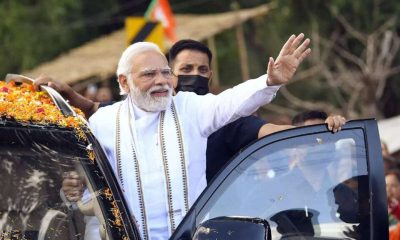
 2024 Lok Sabha Elections14 hours ago
2024 Lok Sabha Elections14 hours agoLok Sabha election 2024: PM Modi to hold roadshow in Ayodhya
-

 Entertainment13 hours ago
Entertainment13 hours agoKareena Kapoor appointed UNICEF India national ambassador, says it’s an emotional day for her
-

 India News12 hours ago
India News12 hours agoWrestler Bajrang Punia suspended by National Anti Doping Body after failing to give urine sample
-

 Entertainment10 hours ago
Entertainment10 hours agoRanbir Kapoor, Alia Bhatt’s daughter Raha enjoys Sunday outing with Ayan Mukharji, video goes viral
-

 Cricket news8 hours ago
Cricket news8 hours agoIPL 2024: CSK’s Pathirana returns to Sri Lanka due to hamstring injury
-

 Cricket news8 hours ago
Cricket news8 hours agoPBKS vs CSK: MS Dhoni clean bowled for golden duck, Dharamsala crowd goes silent, video goes viral



